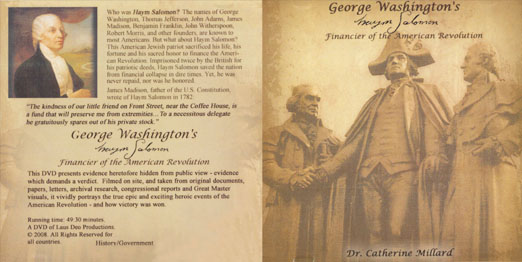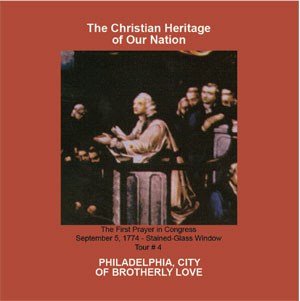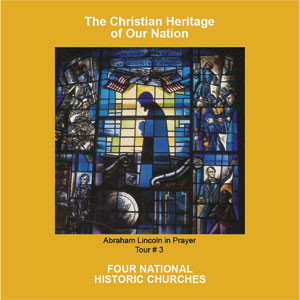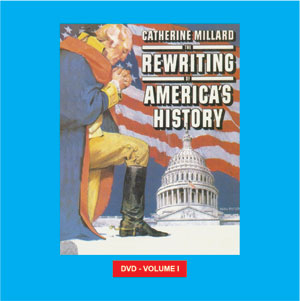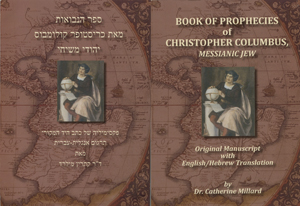Four Pioneer Founders on the “California”February 28, 1849
The first ministers of the Gospel who came here to plant Christian
Protestantism on the ruins of the Catholic Missions of three quarters of a century gone by, were four in number. They came together on the same ship. Three of them came out under the patronage of the American Home Missionary Society.
They were, Rev. S.H. Willey, D.D.; Rev. Sylvester Wood bridge, Jr. and Rev.
J.W. Douglas. The fourth, Rev. Osgood C. Wheeler, D.D., came under the patronage of the American Baptist Home Mission Society. Of the four, Rev. Samuel Hopkins Willey, the Congregational minister, be came widely known as the first Chaplain of the Constitutional Convention and settled at Monterrey, then the Capital of the State. In his Colton Hall Recollections, Rev. Willey gives us this account:
Some recollections of Colton Hall by Rev. S.H. Willey, D.D., a Chaplain of the Constitutional Convention held there in September, 1849:
On landing in Monterey from the Pacific Mail Steamship
California on February 28, 1849, I found a thoroughly Mexican town in every respect. There was but one style of architecture after which all buildings were patterned. But there was one exception.
On the side hill, a little back of town, stood a new, two-story stone building, that looked as if it might have dropped down from a New England village. There was no other building to be seen that resembled it, and I was not long in going to see what it was for. I found it entirely completed, all its rooms and passage-ways were finished. There were two large square rooms on the first floor, and one great hall occupied all the space on the second floor.
There was nobody about the building. In the hall were some carpenters’ tools, saws, planes, hammers, chisels, etc., and some bits of lumber scattered about as if the owners had left hastily. And this, I afterwards learned, had been the case. On the discovery of gold on the American River, carpenters were in as much haste as other people to get to the mines, and lost no time in caring for tools. So there they were, just as the owners had dropped them.
In this condition Colton Hall stood during the summer, except that a school of some sixty boys and girls was gathered and taught in one of the lower rooms during that time.
Meanwhile things were exceedingly quiet in Monterrey, for men were in the mines, and only women and children were at home, save that the officers of the government were there attending to their duties. These consisted largely in sending out horseback expresses and receiving them in return, preparatory to the assembling of the first Constitutional Convention in California, which was called to meet in Colton Hall on the 1st of September, 1849.
The peculiar circumstances under which that convention was called, and the excellence and critical importance of the work done there have lent a dignity to the building itself, suggesting that it should be preserved.
It was undoubtedly the most suitable place for a convention in California at that time. It was built of white stone quarried from a neighboring hill. The large hall in the second story was seventy feet long by thirty feet wide. It was reached by a wide stairway from the rear of the building. The front of the building was ornamented with a portico which you entered from the hall, and was supported by two lofty pillars.
When the time came for the meeting of the convention, carpenters were employed to put the hall in readiness for its use. Some three-fourths of the length of the hall was divided off by a rail for the exclusive use of the members, and the rest was left for spectators.
A raised platform was placed at the end of the hall for the President, and tables in front of it for the secretaries and clerks. Chairs were placed on either side of the central space in front of the President to accommodate the forty-eight members.
The sessions of the convention opened on Monday, September 3rd. Robert Semple was chosen President and took the chair, and William G. Marcy was made secretary. The half dozen native Californians were assigned chairs near together, and their interpreter sat with them. The other members took seats as it happened, for they were nearly all strangers to each other, meeting now for the first time. The seats first taken were usually retained through the session.
On the President’s right, I remember sat Francis J. Lippitt, Edward Gilbert, W.M. Gwin and others, and on his left H.W.
Halleck, Myron Norton, T.O. Larkin, M.G. Vallejo, J.R. Snyder and others not now called.
For over one month that hall was the scene of most earnest and criticallyimportant work, and the results of it are seen in the history of the State and of the nation ever since.1
In retrospect, thirty years later, Rev. Dr. Samuel Hopkins Willey wrote in his book, Thirty Years in California:
Thirty years ago I was thinking “what shall be my theme for my first sermon in California?” I was on the steamship which had then just anchored in the harbor of Monterey; I could not at once find a place to stay on shore. It was Saturday, and I was to preach the next day in Colton Hall. I remained on shipboard to prepare. “What shall be my text?” thought I. “It shall be one that most clearly expressed my errand here,” I said to myself; and so I thought – “We preach Christ, the power of God, and the wisdom of God,” – that is my errand, and that shall be my text; and I would take the same text, and let it express the same errand again now.
That day I had to prepare my discourse on the deck of the steamship. It was the quietest place I could find; and even there I had to cling close to the capstan, sitting beside it on a camp stool, in order not to be pushed about in the general rush. But the noise did not concern me, and therefore it did not disturb me. I was at last in California. Those circling hills around Monterey were beautiful after the winter rains, as they are now. There was inspiration in the air, in the landscape, in the occasion, in the theme, in everything. And now, after the period of a generation has passed away, there is no theme more fitting to the changed situation than this same theme.
As I prepared my anniversary discourse upon it this year, it was not on a ship’s deck, amid the rush of gold-seekers just arrived in the golden land, looking forward to a State yet to be, but it was in my own quiet study, surrounded by my books, and all the needed appliances and helps in my work. I prepared it to be preached, not in a half-finished, unfurnished room, to a small assembly of men, but in a comely and convenient church, to a congregation repress-enting homes, and a well-ordered Christian society. A church which is one of 600 or 700 Protestant churches, where then there was not oneof any denomination. The preaching of that theme seemed to me, in the beginning, worthy of devotion of the noblest life, and it appears to me today, more surprisingly so than it did then. The study of these years, the experience of these years, the living and dying, raise it, in my view, to a higher esteem than ever. And not less does the personal experiences through all these years, in joy and in sorrow, in health and in sickness, in safety and in danger, lead me to rank this theme as the one of absolutely supreme moment today. With it, I began my ministry, and with it I would now begin it anew, thankful for the undiminished health and strength that permits me to do so. And as long as I live, and in every way in which I am able, I will preach “Christ and Him crucified, the power of God and the wisdom of God.”2
On the “California” in Monterey Bay
February 28, 1849
As for going on to the gold mines, “Who can reconcile gold-digging with the proper objects of the Christian ministry?” asked Willey. “Of what value would it be to preach the gospel to men who were seeking not truth but gold?” Looking towards the placers, Protestant missionaries were appalled by what seemed a nightmare of drunkenness, gambling, materialism, and disdain for religious principles. “The Americans,” wrote an observer, “think only of dollars, talk only of dollars, seek nothing but dollars; they are the men of dollars.” But religion in the gold field, as it turned out, was not so anomalous as it seemed. In all of the major towns and many of the minor ones, congregations were organized and churches built, even though they were small congregations and, for the most part, modest churches. For all its iniquity in the eyes of the missionaries, gold-rush society contained men and women, as Willey discovered, who were “…ready to enter heartily into the work of establishing the institutions of the Gospel.”3
Rev. Willey also served as chaplain at the Presidio. Convinced that teaching should be as potent as preaching, he launched a public school, serving as pioneer teacher. He also gathered $1,500 and founded the first library in California. Meanwhile, he preached in Monterey’s Colton Hall. Removing to San Francisco in March of 1850, he organized the Howard Presbyterian Church.
At the Golden Jubilee of the University of California in 1910, President Benjamin Ide Wheeler called Rev. Samuel Hopkins Willey “founder, prophet, seer, beholder,” declaring in his citation: “Upon you, the foremost benefactor of California, first citizen of the State, I confer the degree of Doctor of Laws”…
It has been this author’s privilege to research and copy by hand, the hand-written personal Notebook of Rev. Samuel Hopkins Willey, an unpublished rare manuscript.4 In it, Dr. Willey gives an intimate account of the College of California, of which he was a founder…
Notebook of S.H. Willey
The following memoranda may be of use sometime. They will show that the transfer of the College of California to the State of California for the foundation of a University was not accomplished in such a spirit and manner as might have been looked for, on the part of the authorities and representatives of the State. But it is possible that the future history of the University of California may be such as to atone in some degree for the course pursued by the State authorities in the
beginning, and make the Constitution a blessing to this State, the country and the world. 1888…
Notes:“Relative to the action of the Trustees of the College of California in fixing the permanent site at the place afterward named Berkeley.*
The inquiry for the best site was had in mind by the members of the Board from the early years. It was conducted very thoroughly during the year 1856 with the exceedingly valuable assistance of Rev. Dr. Bushnell. No conclusion was arrived at, however, during that year. Dr. Bushnell returned East early in January 1857, but the inquiry was prosecuted still with more or less vigor by the Trustees. The various places in San Mateo County, Santa Clara County, Alameda County, Contra Costa County, Napa County and Sonoma County reported on by Dr. Bushnell were reviewed and considered, and no one of them seemed to meet all the needful conditions.
The standing Committee of the Board touching a permanent site, consisted of Willey and Rankin. This Committee included in their report to the Board, a site not included in Dr. Bushnell’s Report. It was described as about four miles North East of Oakland on the Paralta Ranch, near the residence of Captain Simmons.
The place presented many strong points for which we had been looking to find them combined in one spot, but it lacked a sufficient flow of running water. Nevertheless, the inquiry was commenced to ascertain whether a sufficient amount of land suitably located, could be obtained. It was carried on through the summer and fall of 1857, and resulted in ascertaining that the land needed could be obtained. The Report described the site in detail, and commended it to the attention of the Board. The Report presented February 23, 1858, was accepted and taken under consideration and the Committee was discharged.
After further consideration for several months, a meeting of the Board was called to take final action on the question of the permanent location of the College. It was held in San Francisco on March 1st, 1858. There were present Rev. Benton, Rev. Wadsworth, Mr. Rankin, Bishop Kip; Mr. Waller; Mr. McLean; Rev. Brierly; Mr. Page; Rev. Willey. The report of the Committee recommending the Berkeley site was taken up, and it was adopted by a unanimous vote of the Board.
Two years later, before taking possession of the property, it was deemed fitting by the Trustees that the site should be formally and publicly set apart and consecrated to the purposes of education forever.Accordingly, a meeting of Trustees was called to be held on these grounds on April 16, 1860.
On the appointed day, we met on this, our chosen site, and spent the time in examining the entire locality, with references to the changing of it from a great grain-field, to be the home of a College. It was a delightful Spring day, and we fully enjoyed it. Before leaving, we looked about for some permanent landmark around which we could gather for some simple ceremonies of dedication.
What is now known as “Founders’ Rock” appeared to be the only thing that met the requirements of the occasion, and so we made our way to it.
At that time, standing on that Rock commanded a view of the entire property we were examining. There were then no Eucalyptus trees, as there are now in great numbers, obstructing the view altogether. From this elevated spot, the grounds were all before us, covered with a crop of growing grain, and bordered with the noble old oaks and other trees as are now standing, and are considered of such priceless value.
Here at this Rock, the Board organized for business. There were present,
Rev. W.G. Anderson, President; Rev. S.H. Willey, Secretary; Rev. E.S. Lacy; Rev. Henry Durant; Frederick Billings, Esq.; Rev. E.B. Goddard; Mr. Edward McLean and Ira P. Rankin, Esq.
The purpose of the meeting was fittingly stated by the President. Thereupon, a resolution was presented formally setting apart these grounds as the future and permanent location of the College of California.
Upon this resolution, somewhat extended remarks were made by most of the members of the Board, particularly by the President, by Mr. Billings and by
Rev. Mr. Durant. Then by unanimous vote, the resolution was passed. Thereupon, the President, standing upon the Rock, surrounded by the members of the Board, with heads uncovered,offered prayer to God, asking His blessing in what we had now done, imploring His favor upon the College which we proposed to build here, and asking that the grounds might ever be the home of Christian learning and a blessing to the youth of this State and a center of the highest usefulness in all this part of the world.
Then we adjourned, and returned some to Oakland and some to San Francisco.
(End of Rev. Samuel Hopkins Willey’s handwritten Notebook account of the College of California, Berkeley).
To learn more, click here.
____________________
Bibliography:
*
The name “Berkeley” was chosen by the trustees of the College of California in honor of George Berkeley, Bishop of Cloyne, author of: Westward the course of Empire takes its way.
1
Willey, Samuel Hopkins, D.D., Chaplain of the Constitutional Convention.Colton Hall Recollections, Berkeley, California, May 31, 1904. To Hon. Joseph R. Know land,Oakland, California (Typed manuscript of Rev. S.H. Willey)
2
Willey, S.H., D.D. Thirty Years in California – A Contribution to the History of the State from 1849-1879. San Francisco: A.L. Bancroft &Co., Printers, 1879, p. 76.
3
Hanchett, William. The Question of Religion and the Taming of CaliforniaThe California Historical Society Quarterly, March, 1953, pp. 49, 50.

